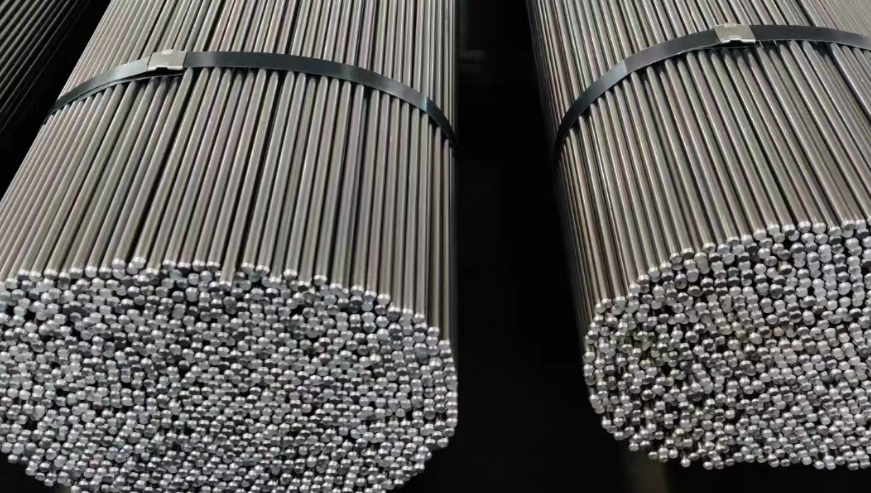As a seasoned expert in the field of metallurgy from سینو سٹینلیس سٹیل, I have spent years studying and working with various alloys. Among the vast array of materials that I have encountered, 17-4 پییچ vs 316 سٹینلیس سٹیل stands out as two particularly noteworthy alloys. Both have their unique characteristics and applications, but it’s the subtle yet significant differences between 17-4 PH & 316 stainless steel that make each alloy suitable for specific uses.

17-4 PH بمقابلہ 316 سٹینلیس سٹیل - کیا فرق ہے؟
Let’s begin with a brief overview of 17-4 PH stainless steel. This alloy, also known as UNS S17400, belongs to the class of precipitation-hardened martensitic stainless steels. Its name is derived from the approximate composition of کرومیم (17٪) اور نکل (4%), which contribute significantly to its corrosion resistance and mechanical properties. The precipitation-hardening process involves the formation of fine particles within the steel matrix, enhancing its strength and hardness. This makes 17-4 PH an excellent choice for applications that require high strength and good corrosion resistance, such as aerospace components, chemical processing equipment, and medical implants.
On the other hand, 316 stainless steel is an austenitic stainless steel that contains molybdenum, in addition to chromium and nickel. The molybdenum addition significantly improves the alloy’s corrosion resistance, particularly against chloride ions, making it suitable for use in marine environments and other corrosive conditions. 316 stainless steel is widely used in the construction of chemical plants, food processing equipment, and surgical instruments due to its excellent corrosion resistance and good formability.
Now, let’s delve into the key differences between these two alloys.
17-4 PH vs 316 Stainless Steel – Mechanical Properties
The first notable difference lies in their mechanical properties. 17-4 PH, through its precipitation-hardening process, achieves significantly higher strength and hardness compared to 316 stainless steel. This makes it an ideal choice for applications where high strength and wear resistance are crucial. However, it’s worth noting that the martensitic structure of 17-4 PH can make it less ductile and tougher to form than austenitic stainless steels like 316.
17-4 PH vs 316 Stainless Steel – Corrosion Resistance
On the corrosion resistance front, both alloys offer excellent performance, but 316 stainless steel has the edge. The addition of molybdenum in 316 stainless steel enhances its resistance to corrosion, particularly in chloride-rich environments. This makes 316 stainless steel the preferred choice for marine applications and other settings where exposure to saltwater or chloride-containing solutions is likely.
17-4 PH vs 316 Stainless Steel – Weldability
Weldability is another important consideration. 316 stainless steel, due to its austenitic structure, is generally easier to weld than 17-4 PH. Austenitic stainless steels have good ductility and formability, which facilitates welding processes. On the other hand, welding 17-4 PH can be more challenging due to its martensitic structure and the potential for cracking and distortion. Proper welding techniques and post-weld heat treatment are often required to ensure the integrity of welded joints in 17-4 PH.
17-4 PH vs 316 Stainless Steel – Cost
Cost is also a factor that needs to be considered. In general, 316 stainless steel is more widely available and typically costs less than 17-4 PH. This is because 316 stainless steel has a simpler alloy composition and is more commonly used in various industries. However, the cost difference may vary depending on market conditions and the specific requirements of the application.
17-4 PH vs 316 Stainless Steel – Applications
In terms of applications, 17-4 PH stainless steel is often found in high-performance applications where both strength and corrosion resistance are critical. This includes aerospace components, oil and gas exploration equipment, and fasteners that require exceptional durability. On the other hand, 316 stainless steel is more commonly used in applications that involve exposure to corrosive environments, such as marine construction, chemical processing, and food manufacturing.
نتیجہ
In conclusion, 17-4 PH and 316 stainless steel are two distinct alloys with their own unique properties and applications. 17-4 PH offers superior strength and hardness through precipitation-hardening, making it suitable for high-performance applications. On the other hand, 316 stainless steel excels in corrosion resistance, particularly against chloride ions, and is widely used in marine and chemical processing environments.
Thank you for reading our article and we hope it can help you to have a better understanding of the differences between 17-4 PH vs 316 Stainless Steel. If you are looking for 316 Stainless Steel suppliers and manufacturers online now, we would advise you to visit سینو سٹینلیس سٹیل.
As a leading supplier of stainless steel products from Shanghai China, Sino Stainless Steel offers customers high-quality 316 Stainless Steel, سٹینلیس سٹیل آرائشی چادریں, سٹینلیس سٹیل ٹیوب, سٹینلیس سٹیل کے پائپ, سٹینلیس سٹیل سٹرپس, سٹینلیس سٹیل کنڈلی, سٹینلیس سٹیل کی پلیٹیں، اور سٹینلیس سٹیل کی سلاخوں بہت مسابقتی قیمت پر۔
 : + 86-18621535697
: + 86-18621535697  :export81@huaxia-intl.com
:export81@huaxia-intl.com